
This guide for instructors gives guidance on using AI and ChatGPT in teaching.
- Subject:
- Computer Science
- Information Technology
- Material Type:
- Module
- Teaching/Learning Strategy
- Author:
- University of Arizona Libraries
- Date Added:
- 10/20/2023
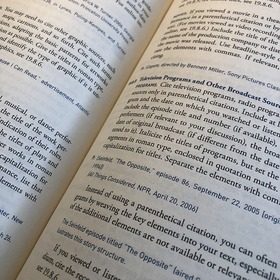
This collection includes openly licensed resources about giving proper attribution when citing sources. Ethical reuse of information ties in with other digital information literacy topics, such as Copyright and Licensing and Digital Citizenship.
Collection thumbnail for Attribution and Citing Sources is from PixaBay

This guide for instructors gives guidance on using AI and ChatGPT in teaching.

The Creative Commons copyright licenses and tools forge a balance inside the traditional “all rights reserved” setting that copyright law creates. Our tools give everyone from individual creators to large companies and institutions a simple, standardized way to grant copyright permissions to their creative work. The combination of our tools and our users is a vast and growing digital commons, a pool of content that can be copied, distributed, edited, remixed, and built upon, all within the boundaries of copyright law.

This guide provides resources on the topic of Attribution and Citing Sources, as a supplement to the OERTX Digital Information Literacy Hub.
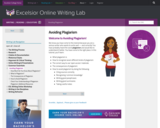
We know you have come to this tutorial because you are a serious writer who wants to write well — and correctly! You have probably heard the word plagiarism and would like to understand it better. You have come to the right place. In this tutorial, you’ll learn:
What plagiarism is
How to recognize seven different kinds of plagiarism
The correct way to use ‘open access’ materials
The consequences of plagiarism
How to avoid plagiarism by doing the following:
Citing sources correctly
Recognizing ‘common knowledge’
Writing good paraphrases
Writing good summaries
Taking careful notes

You can use CC-licensed materials as long as you follow the license conditions. One condition of all CC licenses is attribution: crediting the author and giving the source information. Generally speaking, attribution must reasonably include all relevant information supplied by the licensor. Because each use case is different, you can decide what form of attribution is most suitable for your specific situation. The following examples are intended to illustrate what typical prudent practices look like. We expect community norms and expectations to evolve with time, and will adapt this guide accordingly. In addition to attribution, there are also things to consider as a licensor or a licensee. If you are a licensor and would like to learn how to mark your own material with a CC license, here.

A five part online module that teaches best practices for online information literacy and identifying disinformation or untrustworthy sources.
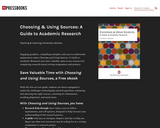
Choosing & Using Sources presents a process for academic research and writing, from formulating your research question to selecting good information and using it effectively in your research assignments. Additional chapters cover understanding types of sources, searching for information, and avoiding plagiarism. Each chapter includes self-quizzes and activities to reinforce core concepts and help you apply them. There are also appendices for quick reference on search tools, copyright basics, and fair use.

This post provides some basic guidelines around citation and attribution when creating and adapting open educational resources (OER).

Even though they share characteristics, citations and attributions play different roles and appear in different places. This chapter defines citation and attribution, explains how and when they should be used in an open textbook, and discusses their purposes, similarities, and differences.

An overview of tips, tools, and resources for all your citation needs

It's important to cite sources you used in your research for several reasons:
To show your reader you've done proper research by listing sources you used to get your information
To be a responsible scholar by giving credit to other researchers and acknowledging their ideas
To avoid plagiarism by quoting words and ideas used by other authors
To allow your reader to track down the sources you used by citing them accurately in your paper by way of footnotes, a bibliography or reference list
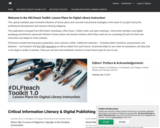
“Digital,” “library,” “pedagogy” — what happens when these three terms are brought together as the foundations of a community of practice? The strategies and insights gathered here suggest a preliminary answer to that question, but the short version might be: a lot. Digital access and affordances spark new approaches to primary sources; memes model scholarly conversation; hands-on work with APIs and web scraping quickly bring the rhetoric of the digital as seamless access to information back down to earth.
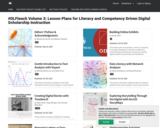
The nine lessons in this volume cover foundational digital tools like Voyant and Omeka and newer ones such as Transkribus and the International Image Interoperability Framework (IIIF). Most lessons focus on the act of making and engaging with tools, while others address misinformation and algorithmic bias. The structure and length of the lessons vary considerably, with some designed for standalone sessions and others spanning the duration of a course.

While formal citation is the most visible form of attribution, there are variety of other ways to acknowledge other people's ideas and the products of other people's work.

When using media for presentations, even if it is an openly licensed resource, we still need to give proper attribution to the creator. With Creative Commons licenses, attribution is actually a requirement of use.
A commonly accepted attribution format in the open community is the TASL acronym. It's a bit less specific than APA or MLA format, but every attribution should have the following components and answer each question in italics. Where possible, link to the original components and do include any additional information if it feels relevant or useful.
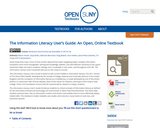
Good researchers have a host of tools at their disposal that make navigating today’s complex information ecosystem much more manageable. Gaining the knowledge, abilities, and self-reflection necessary to be a good researcher helps not only in academic settings, but is invaluable in any career, and throughout one’s life. The Information Literacy User’s Guide will start you on this route to success.The Information Literacy User’s Guide is based on two current models in information literacy: The 2011 version of The Seven Pillars Model, developed by the Society of College, National and University Libraries in the United Kingdom and the conception of information literacy as a metaliteracy, a model developed by one of this book’s authors in conjunction with Thomas Mackey, Dean of the Center for Distance Learning at SUNY Empire State College. These core foundations ensure that the material will be relevant to today’s students.The Information Literacy User’s Guide introduces students to critical concepts of information literacy as defined for the information-infused and technology-rich environment in which they find themselves. This book helps students examine their roles as information creators and sharers and enables them to more effectively deploy related skills. This textbook includes relatable case studies and scenarios, many hands-on exercises, and interactive quizzes.

Regardless of what kind of material you're using, giving proper credit to the creator -- citing your sources -- is essential.

Scholars are pursuing an international reputation earlier in their careers. Early career researchers often encounter norms and expectations they may be unfamiliar with, specifically open access publishing, research data sharing mandates and establishing their scholarly identity via professional social media. They must learn to navigate the research lifecycle from topic selection to data collection and ultimately dissemination of their work. This text will help researchers in STEM and the social sciences navigate the complexities of academic research in the international research community. Utilizing a combination of text, visuals, and reflection, readers will learn to establish themselves as researchers in the academic community.
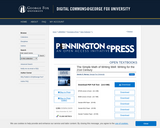
Writing guides abound, but The Simple Math of Writing Well is one of a kind. Readers will find its practical approach affirming, encouraging, and informative, and its focus on the basics of linguistic structure releases 21st-century writers to embrace the variety of mediums that define our internet-connected world. As Harrop reminds us in the opening chapters of her book, we write more today than ever before in history: texts, emails, letters, blogs, reports, social media posts, proposals, etc. The Simple Math of Writing Well is the first guide that directly addresses the importance of writing well in the Google age.